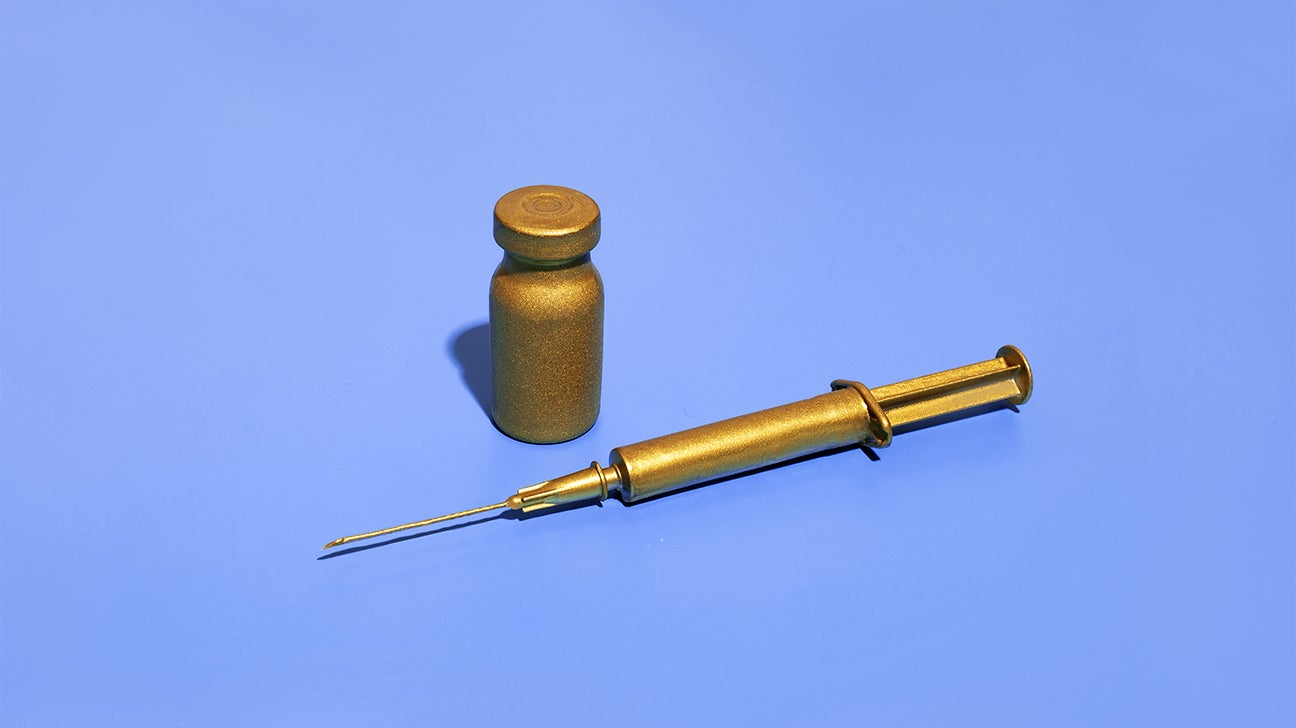Whether you’re hoping to avoid frown lines or ward off crow’s feet, you might wonder: Does Botox prevent wrinkles? And if so, *how*?
Good news: *Yes,* Botox injections can prevent some types of wrinkles. But before booking a ‘tox sesh, you should know how it works, if it’s right for you, and what happens if you stop treatments.
We combed through the science and consulted a board certified derm about preventive Botox. Here’s what you need to know.

How does Botox prevent wrinkles?
Botox inhibits the release of acetylcholine, a neurotransmitter responsible for muscle contraction, according to Dr. Quynh-Giao Sartor, MD, FAAD, a board certified dermatologist in Houston, TX. By temporarily freezing face-creasing muscles, Botox keeps new wrinkles from forming.
Because Botox prevents creases rather than tightens skin, it’s used to prevent dynamic rhytides — aka, wrinkles, formed by repetitive movements. It *might* also fight static wrinkles caused by gravity and loss of elasticity.
“Over time, those who have had repeated injections of Botox in the same area can notice less pronounced wrinkles at rest in those areas,” Sartor explains.
But Botox isn’t magic. Sartor says you’ll need to wait for 1 to 2 weeks post-injection to notice the effects. And since paralysis is temporary, expression lines slowly return 3 to 6 months after treatment.
When should you start preventive Botox?
Sartor says anyone in their mid-to-late 20s who notices dynamic rhytides can consider Botox. Wrinkles take years to form, so preventive Botox usually starts before those lines have deepened into permanent furrows.
Remember that it’s best to make this call based on your specific goals and skin needs rather than simply because you’ve hit a certain age.
Is preventive Botox right for you?
TBH, your choice to pursue preventive Botox (or not) is highly personal. It’s really up to you.
The main benefits of Botox are wrinkle prevention and softening of lines you already have.
However, Botox isn’t a one-and-done deal. The effects wear off within a few months, so if you dig the results, you’ll need to consider the cost — about $150–$1600 per session — for repeat treatments. Starting in your mid-20s could mean *so many appointments* if you stick with it.
Gimme more Botox, pls
Botox is on the rise. In 2017, the American Society of Plastic Surgeons reported an increased use in people in their 20s and 30s.
This influx of Botox babes interested Dana Berkowitz, a gender studies professor at Louisiana State University. She wrote Botox Nation: Changing the Face of America, which investigates the boost in Botox and points out how marketing messages are carefully aimed at young women who could turn into lifelong customers.
Marketing messages aside, your decision about Botox is yours alone. It’s *your* face! So if you’re interested in treatment, look for a trusted dermatologist or medical aesthetics provider with credentials and a solid reputation.
Here’s what Sartor recommends discussing in your initial consultation:
- biological age
- skin quality and complexion
- lifestyle
- personal aesthetic preferences
Be open and honest with your provider so they can determine the best treatment for your goals.
What happens if you stop treatment?
The clinical effects of Botox disappear within 3 to 6 months. That means you’ll need regular sessions to stay wrinkle-free. Otherwise, Sartor says, your creases will eventually return to baseline.
Safety first
As with any skin care treatment, there are also side effects and safety considerations to keep in mind. Pregnant or nursing people shouldn’t get Botox, for instance.
Many side effects occur due to the unintended spreading of the toxin. So your potential to experience these unpleasant symptoms depends on where you’re injected:
Anyone experiencing trouble breathing, swallowing, or talking after Botox should call 911 immediately.
Last but definitely not least, follow aftercare instructions to get the best possible result and avoid mishaps.
Other ways to reduce signs of aging
There are so many ways to soften signs of aging. Shall we name a few?
- Microneedling: This procedure uses a tool with lots of little needles to carefully create micro-wounds that stimulate collagen production. Microneedling helps reduce acne scars, stretch marks, and fine lines.
- Chemical peels: As the name implies, chemical peels exfoliate (peel) your skin with chemicals rather than physical exfoliants. Chemical peels can address many skin concerns, including fine lines and wrinkles.
- Retinol: This famous anti-wrinkle agent helps improve skin texture. Sartor says using retinol or a retinoid can encourage cell turnover and collagen production while reducing uneven pigmentation.
- Sunscreen, sunscreen, sunscreen: “No amount of Botox is a substitute for sunscreen,” Sartor says. “I encourage every patient to wear broad-spectrum SPF 30 or higher daily, as the sun is a major contributor to wrinkle formation.” Yep, sunscreen really can prevent wrinkles!
FAQs
What age should you start Botox?
There’s no perfect age for starting Botox treatments. Some people who want to get a jumpstart on wrinkle prevention start in their mid-20s, while others begin Botox later in life.
Do you get more wrinkles after Botox?
According to Sartor, a board certified dermatologist, it’s not typical to get more wrinkles after Botox.
Does Botox slow aging?
While Botox won’t freeze time, it can slow the *look* of aging by treating dynamic wrinkles and preventing them from becoming permanent, according to Sartor.
Bottom line
Botox can prevent wrinkles, but maintaining results requires upkeep. Feel free to get after it if you’re comfortable paying for Botox injections every 3 to 6 months.
Of course, there are also other methods of preventing or softening wrinkles. Microneedling and chemical peels can help. It’s also a good idea to wear sunscreen every day and start using a good retinol product.


0 Commentaires